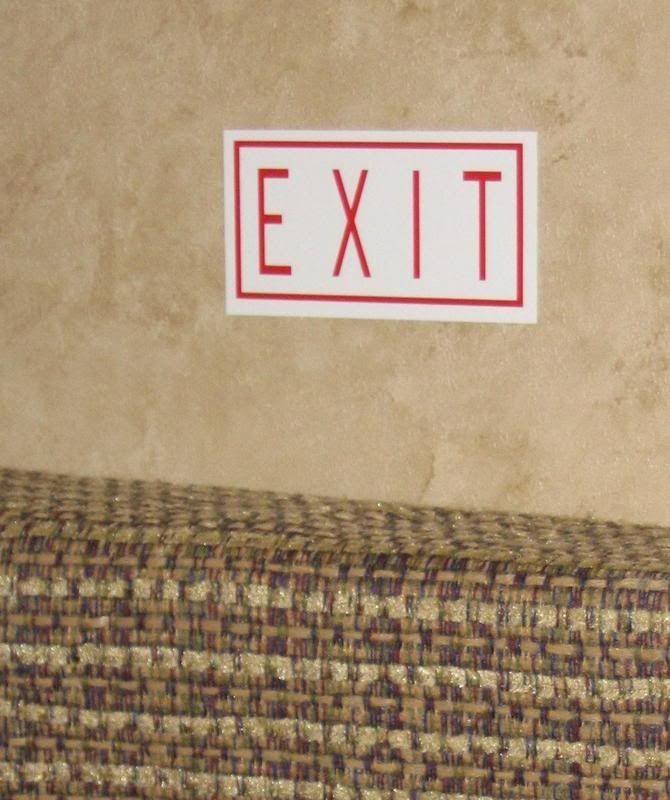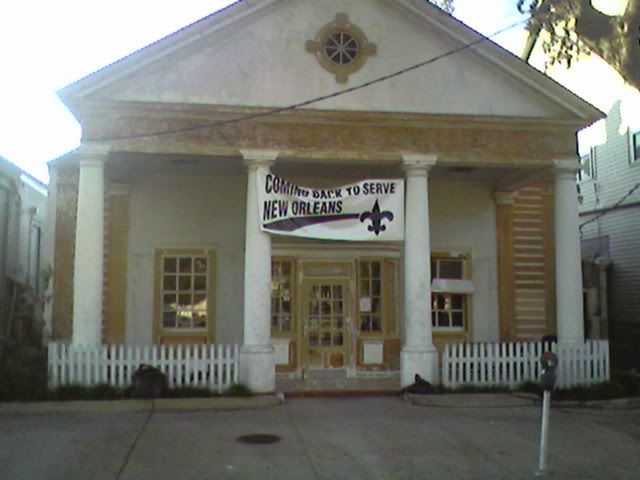Our corner of post-Katrina New Orleans is dominated by empty houses. The western boundary of Vista Park is the London Avenue Canal, one of the canals that could not hold Katrina back. Many of the houses remain, almost 16 months later, decimated and dormant, left to waste away like carcasses in the wilderness.
We told our girl to stay out of these empty houses for two reasons. First, and most obviously, is for safety. I know that there are still looters about. I know that there may be vagrants or unscrupulous contractors helping themselves to what is not theirs. I haven’t heard of anyone around here being attacked or hurt in such a manner, but I don’t want my Precious Daughter to be the first.
And then we told her to stay out of the empty houses because they still belong to someone. They may be ruined almost beyond recognition, their decomposing contents ripped out and disposed like fish guts, but they are still the houses of our neighbors.
Most of these houses are unsecured with windows knocked out and doors removed or left wide open. But this does not constitute an invitation or even permission to anyone to just come on in.
I know some folks on Pratt Drive went so far as to post signs on their decimated homes warning the tourists to STAY OUT. Tour buses still rumble by those houses (and even sometimes past my own FEMA Travel Trailer). These folks don’t mean to be a nuisance and perhaps their curiosity simply gets the best of them. Still, I completely understand the need and right of my neighbors to enforce simple decency and respect for other people’s property.
And yet, I confess that once a house is demolished, once it is smashed into a pile of refuse to be hauled off, my curiosity gets the better of me. I rationalize that once the walls are down and the roof pulverized, it really doesn’t constitute a “home” anymore.
More than once, I have come home from work to find a mound of brick and boards where there once was a neighbor’s house.

More than once I have given in to the morbid interest of seeing what else is trapped and tangled in the construction debris.
What is it I find? It is books and magazines, photographs and letters, phono albums and computer diskettes, dishes and silverware, pots and small appliances—all the gumbo of what used to be part of the nourishment of living in America today. It is a horrible image to see all this wasted and ruined and just waiting for the final trip to the graveyard, but I can’t look away.
The experience is different from seeing my own home demolished. When I looked into my own pile of debris, I recognized most of it—a painting that used to hang in the living room, a doll that used to reside on my Precious Daughter’s bed, a hook that used to be on the back of the bathroom door.

A recent mound of former house I inspected included hundreds of cancelled checks dating back to the 1970’s. An archeologist might find it an interesting exercise to piece together that string of cancelled checks to learn something about the family that used to live here. But I am no archeologist. I can only infer that these things were once important, perhaps significant possessions.
Another had a collection of battered classical records, some still in their paper sleeves and cardboard jackets, as if at any moment their owner would lovingly slip them out and carefully place them on the turntable. But the collector of this music is long gone. These records, like the houses in which they once resided, are now permanently silent.
When I look at the remains of others’ homes, I sense the importance of the items, but instead of sentimental attachment, there is burning curiosity. Where did that vase come from, and where was it displayed? Who is that in these photographs, when and where were they taken, and where are these people now? What present accompanied this gift card?

These questions remain unanswered, lost in the ebb of time and the flow of relentless, invasive, destructive floodwater. These houses and this debris are rapidly on their way to being permanently discarded and all but forgotten in the panorama of time.
Nature has one hard, fast rule of her own: Nothing remains the same.





































